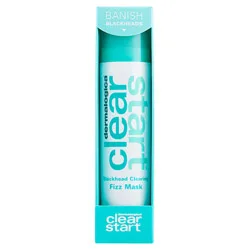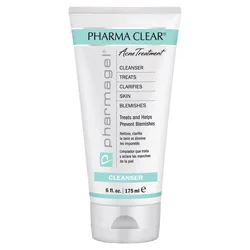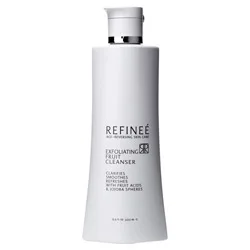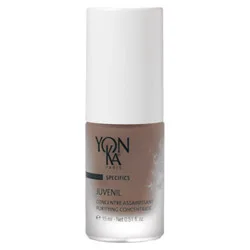Those Pesky Blackheads!
Blackheads are like ants at a picnic; first one or two appear and then suddenly you've got a whole colony! Every time you squeeze one of them away, you find dozens more to tackle. As satisfying as that squeeze may be in the moment, they just keep coming back - grrrrrrrrrr! So, maybe we need a better solution that squeezing.
What exactly are blackheads?
Before you go about trying to rid your skin of blackheads, it helps to first understand what they actually are. Blackheads are just an oxidized mix of oil and dead skin cells that are sitting in pores; the exposure to air is what causes them to oxidize and turn black.
The technical name for a blackhead is an open comedone (and comedone is the scientific term for an acne lesion). There are two different types of comedones: Open (blackheads) and closed (whiteheads). A dilated opening of a hair follicle (your pore), caused by a build-up of sebum, which is oil, P. Acnes bacteria, is the primary bacteria responsible for causing acne, and inflammation.
In other words: A blackhead is essentially a hair follicle that's so blocked up with dead skin cells, oil, and bacteria that it becomes a wide opening at the surface of the skin. When all of this gunk hits the open air (because of the wide opening), it oxidizes and turns the color black.
Despite their off-putting color, blackheads have nothing to do with dirt. Having blackheads is not a sign that you're too dirty. The bad news, for some, is that there is a genetic component to blackheads, meaning that certain people are more prone to developing them, although the underlying reason for this isn't yet fully understood.
How do you treat blackheads?
When it comes to getting rid of blackheads, or any type of acne for that matter, there are two ways you can go: You can DIY at home, or, for more severe or persistent cases of acne, you can see a dermatologist. The best plan of action for you will depend on a lot of different factors, of course, but here are the best over-the-counter and prescription treatments.
- For mild blackheads, try a salicylic acid scrub. If you have blackheads, your go-to ingredient should be salicylic acid. This beta hydroxy acid helps remove excess oil and exfoliate the cells from the surface of the skin. The best way to use salicylic acid? Try a gentle face scrub, which acts as a sort of one-two punch for combatting blackheads, providing double the exfoliation powers. The combination of physical exfoliation from the scrub, along with chemical exfoliation from the salicylic acid, can help keep the pores clear. However, you won't want to exfoliate with a scrub every day. The general rule of thumb is three times per week for oily or combination skin, and just once weekly for sensitive skin. On the days you don't use a scrub, use a gentle salicylic acid-containing cleanser.
- Try a skin care brush. Electronic skin-care devices, aren't just hype "” they really do cleanse your skin much more thoroughly than your fingers alone. Just be sure not to overdo it because irritation from the cleansing brush can flare up other acne. One or two times a week should be sufficient.
- For more stubborn blackheads, go with a retinoid cream. Retinoids can help treat blackheads and clogged pores by reducing the stickiness of the cells that clog pores, as well as speeding up the rate at which the skin turns over and regenerates. If they are especially persistent, you may need a prescription retinoid cream, such as tretinoin, Retin A micro, or Tazorac. Pro tip, especially for those with sensitive skin: If a retinoid cream is too drying, try applying it over moisturizer (or even between layers of moisturizer).
- For severe cases, oral acne medication may be necessary. When all else fails, your dermatologist might prescribe an oral medication to help clear things up.
- Lastly, don't forget to moisturize. Moisturizing is a crucial step in any skin-care routine "” even if you've got acne-prone skin. Why, you ask? All of these methods may strip oils from the skin and be drying. It's important to maintain the right balance in the skin, and moisturizing will allow you to continue using exfoliating products without any issues. Always use non-comedogenic moisturizers, which are formulated specifically to not clog your pores.




 write a review
write a review

